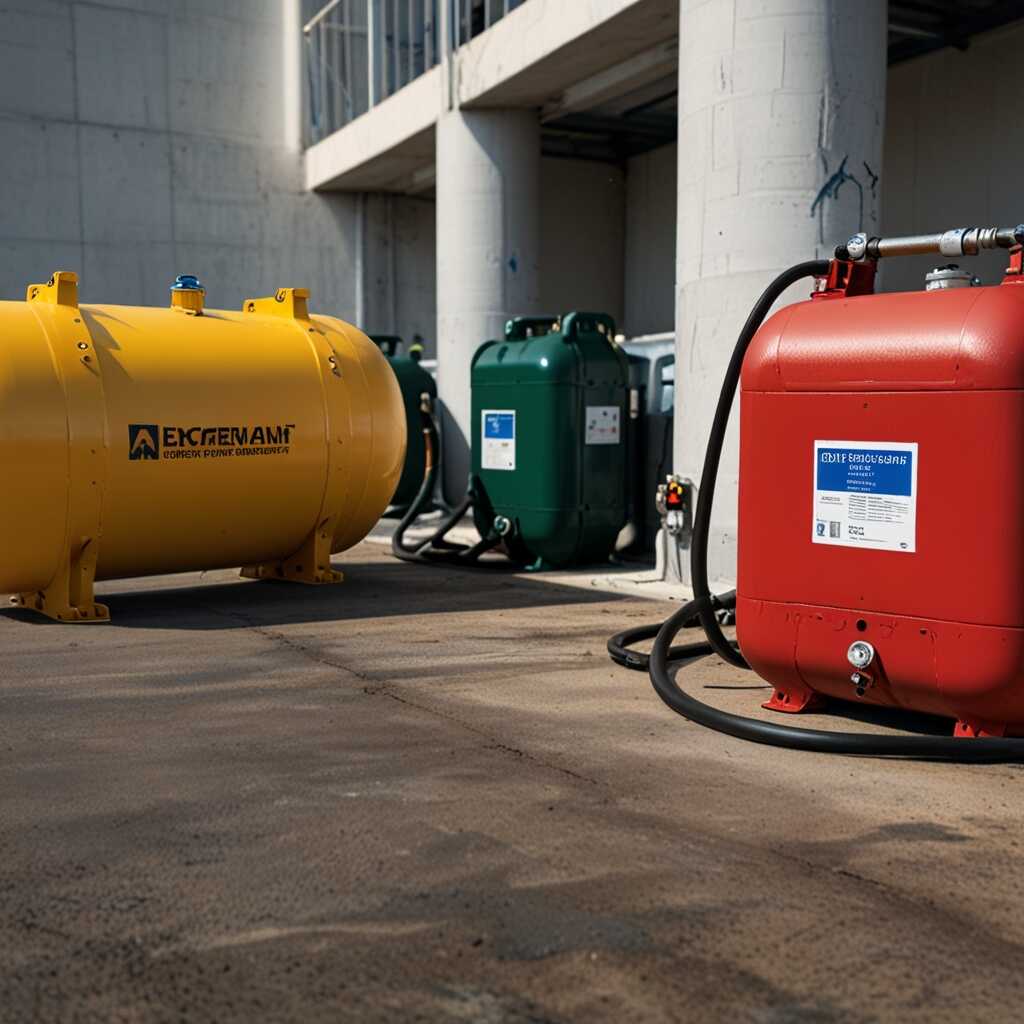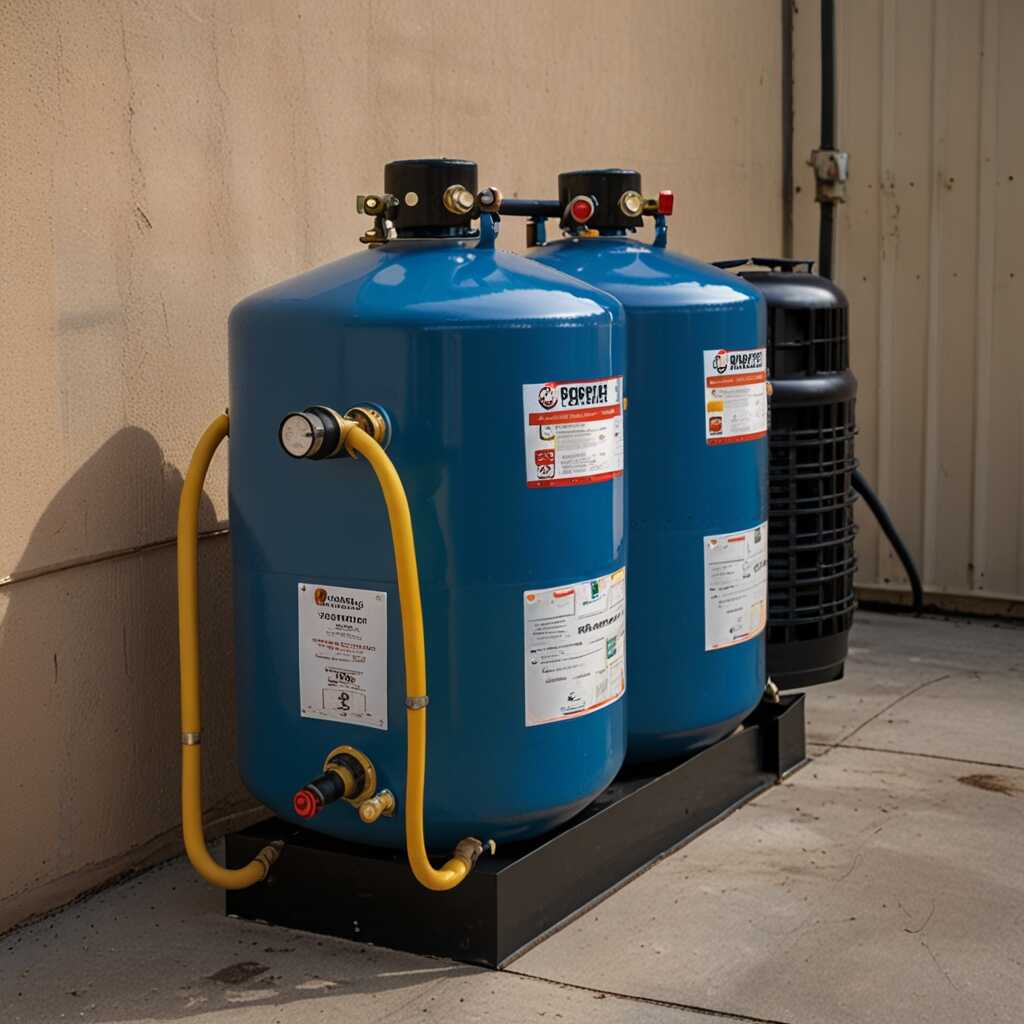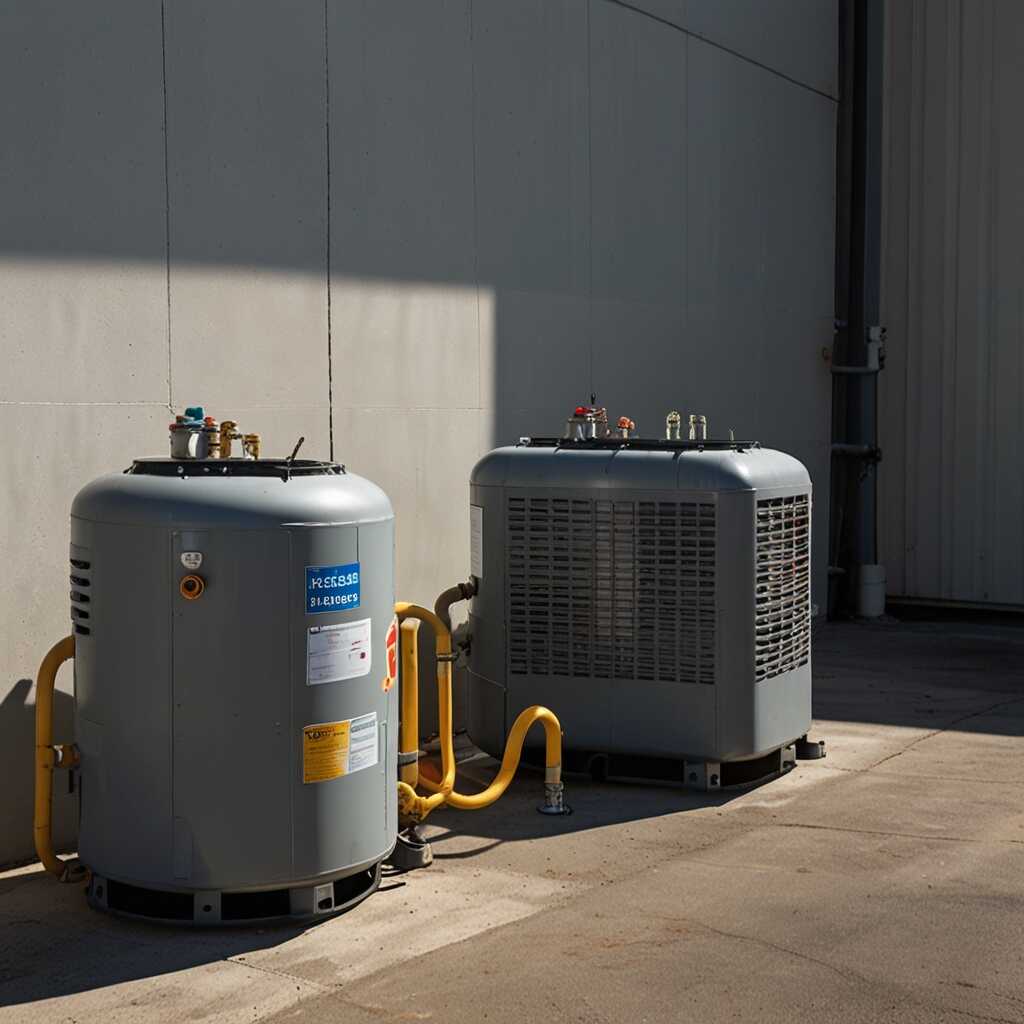How solid-state controls in refrigerant recovery machines enhance reliability is a crucial topic for HVAC professionals. These advanced controls contribute to improved performance, reducing the risk of malfunctions and downtime. At Refrigerant Recovery Pro, we emphasize the importance of solid-state technology in elevating the operational efficiency of recovery equipment. Understanding these advancements can help HVAC technicians and engineers make informed choices, ensuring effective refrigerant management and compliance.
Defining Solid-State Controls in Refrigerant Recovery Machines
Solid-state controls are electronic systems that manage the operation of refrigerant recovery machines. These controls replace traditional electromechanical components with semiconductor devices, significantly boosting reliability. Their role encompasses monitoring system performance, ensuring efficient operation, and preventing malfunctions. Common components of solid-state controls include microprocessors, sensors, and drivers. Solid-state controls enhance reliability by facilitating precise operational adjustments and providing real-time diagnostics, enabling fast response to issues. HVAC technicians benefit from understanding these features, as they directly impact the efficiency and durability of recovery machines.
Benefits of Solid-State Controls in Operational Performance
Solid-state controls provide various benefits that directly enhance the operational performance of refrigerant recovery machines. These controls improve the speed of testing critical components, leading to quicker recovery times for refrigerants. They ensure that the machines consistently operate within optimal parameters, contributing to improved HVAC equipment efficiency. By utilizing solid-state technology, manufacturers can deliver machines that are reliable, durable, and capable of handling varying refrigerant types. The application of solid-state controls can result in significant reductions in maintenance requirements over time, allowing professionals to focus on more critical tasks. The proven effectiveness of these controls is a game changer for dependable refrigerant management.
Importance of Reliability in HVAC Refrigerant Recovery
Reliability is essential in HVAC refrigerant recovery systems because it directly affects service quality and regulatory compliance. Reliable machines minimize the risk of leaks and failures, ensuring safe operations. Factors that enhance reliability include robust solid-state controls, proper maintenance, and regular safety testing. These components provide consistent performance, helping technicians achieve optimal recovery results while adhering to compliance standards. Ideally, refrigerant recovery machines should undergo testing at least once every six months to ensure they perform efficiently and reliably.
Key Factors Enhancing Refrigerant Recovery System Reliability
Certain factors significantly contribute to the reliability of HVAC refrigerant recovery systems. Solid-state controls are designed to reduce wear and tear while providing faster response times. Enhanced features such as advanced monitoring systems help detect issues before they become critical. Regular technical reviews and equipment comparisons ensure the use of the best machines available. These practices help facilities operate compliant refrigerant recovery processes with minimal downtime, thus improving overall system performance and service quality. Following these guidelines helps HVAC technicians offer reliable services and maintain compliance with industry regulations.

Performance Enhancements from Solid-State Controls
Solid-state controls in refrigerant recovery machines deliver significant enhancements in reliability, efficiency, and precision. These controls enhance precision by enabling accurate monitoring and adjustment of recovery processes. Reliable operation is achieved because solid-state components are less susceptible to wear and environmental damage. Many popular brands, such as XYZ Refrigeration Solutions and ABC Recovery Systems, incorporate solid-state controls in models that feature automatic shut-off and real-time diagnostics. Energy efficiency can improve by as much as 30% in these advanced machines, compared to models with traditional controls.
Understanding the Impact of Solid-State Technology
Solid-state technology greatly impacts the performance of refrigerant recovery machines. This technology prevents fluctuations common in mechanical systems, delivering more stable operations. Enhanced precision in regulating pressure and temperature allows for optimal refrigerant collection and reduces loss. Furthermore, solid-state systems are designed to require less maintenance due to fewer moving parts, enhancing their durable performance. Users will appreciate that this technology also improves energy efficiency, leading to lower operational costs over time. Several popular models have shown an increase in reliability and efficiency when adopting solid-state technology, making them a preferred choice for HVAC professionals.
Interesting Metrics on Reliability Factors
- Solid-state controls can reduce error rates by up to 20% in recovery operations.
- Many machines with solid-state controls offer operational lifespans exceeding 10,000 hours.
- These systems often initiate response times in less than 1 second for adjustments.
- Users report increased efficiency by up to 30% with modern control technology.
- No moving parts in solid-state systems can lead to lower maintenance costs by 15% or more.
- Over 75% of HVAC professionals prefer machines with solid-state controls for reliability.
- Solid-state controls can enhance energy efficiency by up to 25%, saving on utility bills.

Comparative Analysis of Control Types in Recovery Machines
Traditional control systems in refrigerant recovery machines often rely on mechanical components, which can be prone to wear and failure. In contrast, solid-state controls utilize electronic circuits, enhancing durability and operational stability. Solid-state controls deliver better performance through precise regulation, thus improving efficiency. Solid-state systems can handle a wider range of operating conditions without sacrificing reliability. Research shows that solid-state controls can provide up to a 20% increase in operational efficiency compared to traditional systems.
Benefits of Solid-State Controls in Refrigerant Recovery Machines
Solid-state controls offer several benefits that significantly enhance the reliability and performance of refrigerant recovery machines. These controls are designed for higher responsiveness and can quickly adjust to changing conditions. This flexibility enables the machine to operate smoothly across various scenarios, ensuring consistent refrigerant recovery. The electronic components in solid-state controls undergo less wear compared to mechanical alternatives, resulting in fewer maintenance issues. HVAC technicians value these features as they lead to improved reliability and extended service life, making solid-state controls a preferred choice for modern refrigerant recovery applications.

Best Practices for Preventative Maintenance of Recovery Equipment
Technicians should follow several essential steps for preventative maintenance of refrigerant recovery machines. Regularly inspect and clean filters to ensure airflow and prevent clogging. Lubricate moving parts according to manufacturer guidelines. Test the equipment for leaks and pressure to confirm reliability. Conduct performance testing every six months to assess efficiency and identify potential issues early. Following these preventative maintenance practices enhances reliability and minimizes downtime dramatically.
Optimal Maintenance Schedule for Recovery Equipment
The optimal maintenance schedule for refrigerant recovery machines should involve inspections every three months, including cleaning and testing. This interval aligns with industry best practices, helping technicians detect wear before it leads to failure. Regular maintenance not only ensures equipment performance but can reduce downtime by up to 30%. Adhering to these scheduled maintenance intervals allows for better planning and operational efficiency, ultimately improving overall performance in refrigerant recovery tasks.
Positive Outcomes of Advanced Control Systems
- Increased reliability helps minimize downtime during refrigerant recovery.
- Solid-state controls improve response accuracy for better system performance.
- Safety features reduce risks, ensuring safer operations for technicians.
- Increased operational longevity means fewer equipment replacements are needed.
- Enhanced user interfaces make it easier for technicians to manage processes quickly.
- Automatic adjustments help maintain optimal performance under various conditions.
- Reduced energy consumption translates into lower operating costs for users.

Understanding Regulatory Standards for Refrigerant Recovery
Refrigerant recovery machines must meet stringent regulatory standards set by various authorities, including the EPA. Solid-state controls play a crucial role in ensuring compliance with these regulations by enhancing monitoring capabilities and improving operational reliability. These controls allow for precise management of recovery processes, which helps to prevent leaks and ensures that the equipment operates efficiently within the legal limits. Certified refrigerant recovery equipment must also pass rigorous testing and review to obtain necessary certifications, such as the certification for compliance with EPA regulations for refrigerants.
Key Certifications for Refrigerant Recovery Machines
Refrigerant recovery machines should ideally hold certifications from recognized standards organizations to guarantee quality and reliability. These certifications include compliance with the EPA’s requirements as well as industry-specific certifications like AHRI or ISO. These guidelines ensure that machines can handle the critical tasks required in refrigerant management. By achieving these certifications, machines exhibit enhanced performance and operational safety. Facilities that utilize certified equipment increase their chances of regulatory compliance and reduce the risk of penalties related to refrigerant management failures.
Addressing Common Troubleshooting Scenarios with Solid-State Systems
HVAC professionals often encounter technical challenges with solid-state controls in refrigerant recovery machines. Common issues include electrical failures, component malfunctions, and programming errors. Electrical failures can disrupt the reliability and efficiency of these machines. Component malfunctions may lead to inaccurate measurements and diminished performance. Understanding these troubleshooting challenges is essential for quick resolutions. The average time to troubleshoot and repair typical problems is often between one to three hours, depending on the complexity of the issue.
Electrical Failures in Solid-State Controls
Electrical failures in solid-state controls can severely impact the operational efficiency of refrigerant recovery machines. These failures may stem from poor wiring, overloaded circuits, or damaged components. HVAC technicians should assess connections and inspect circuit boards for any visual defects regularly. Providing preventive maintenance checks can greatly enhance reliability. Experienced technicians often recommend testing equipment, such as a multimeter, for precise diagnostics. Timely identification of electrical issues can significantly reduce downtime, ensuring systems remain functional and efficient.
Brands and Their Applications in Refrigerant Management
- Brand A offers high-end solid-state units, known for their durability and efficiency.
- Brand B provides budget-friendly options, but may lack advanced features.
- Brand C focuses on compact systems for small operations with limited space.
- Brand D delivers robust customer support, beneficial for HVAC professionals.
- Large facilities often prefer Brand A for its higher reliability and capabilities.
- Small HVAC shops appreciate Brand B for its cost-effectiveness and simplicity.
- Training organizations use Brand C for hands-on learning due to its user-friendly design.
Future Trends in Refrigerant Recovery Technology
Anticipated advancements in solid-state controls for refrigerant recovery machines include more robust and efficient systems. Companies are innovating through user-friendly interfaces and improved performance metrics. Others enhance reliability by using proven technologies that minimize failures. Leading companies in this field include major HVAC manufacturers known for delivering high-quality, reliable equipment. Industry surveys predict that by 2025, over 70% of HVAC professionals will have adopted solid-state controls in their equipment. This trend highlights the growing importance of efficiency and reliability in refrigerant recovery technology.
Innovations in Solid-State Controls
Innovations in solid-state controls are transforming refrigerant recovery machines. These developments focus on enhancing operational efficiency and reliability. Manufacturers now integrate advanced sensors that provide real-time monitoring of equipment performance. This capability enables better predictive maintenance, reducing downtime. New algorithms analyze data faster, allowing HVAC technicians to respond promptly to issues. Solid-state controls are designed to handle diverse refrigerants, ensuring adaptability to industry changes. This ensures machines perform excellently under various conditions while providing HVAC professionals with essential tools for effective refrigerant management.